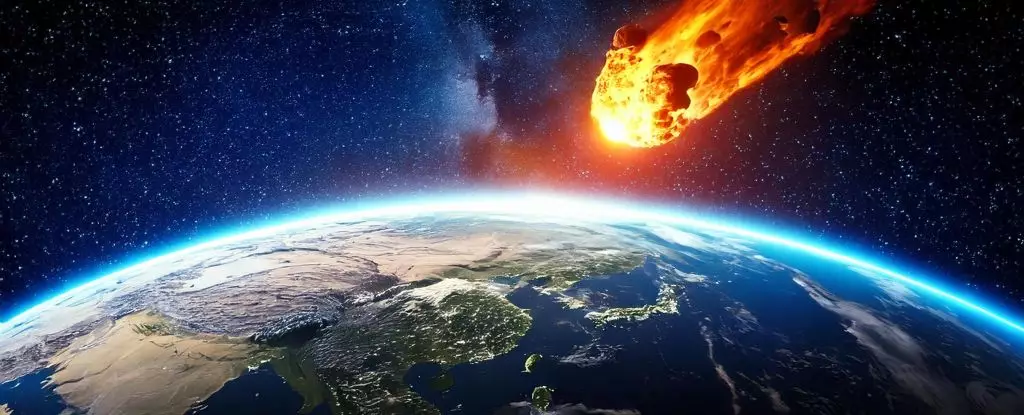Space, a seemingly infinite expanse, harbors countless celestial bodies, not all of which pose a benign presence. Among these, asteroids represent significant threats capable of altering life as we know it if they were to collide with Earth. Recent simulations regarding the asteroid Bennu, which may potentially collide with our planet in September 2182, have underscored the importance of studying these cosmic rocks to gauge their threats and prepare adequately. Although the likelihood of an impact is statistically low—about 1 in 2,700—addressing these dangers demands our attention and preparedness.
The scenario laid out by climate scientists from Pusan National University in South Korea poses queries about the aftermath of a sizeable asteroid impact. The last substantial collision occurred 66 million years ago, leading to the extinction of the dinosaurs. Their research simulates the consequences of Bennu, a 500-meter-wide asteroid. By employing advanced computing models, the scientists aim to capture the breadth of potential outcomes should such an impact occur.
The findings anticipate that a collision with a medium to large-sized asteroid would result in more than immediate devastation. According to researchers Lan Dai and Axel Timmerman, their projections assert that such an event could inject between 100 and 400 million tons of dust into the Earth’s atmosphere. This barrage of particles would lead to significant climate shifts, profoundly affecting both terrestrial and marine ecosystems.
Temperatures could plummet by as much as 4 degrees Celsius, while precipitation could decline by up to 15%. Such drastic changes could lead to an ‘impact winter’ scenario, reminiscent of the conditions following the Chicxulub impact but on a different scale. This phenomenon may severely inhibit global photosynthesis, posing dire threats to food security as initial reductions in plant growth and productivity manifest.
Moreover, the potential ozone depletion—estimated at 32%—further complicates the situation. Ozone, a protective layer in the stratosphere, shields the Earth from harmful ultraviolet rays. Its decrease could jeopardize plant life, compounding the effects of diminished temperature and precipitation. The interconnected nature of Earth’s ecosystems suggests that these alterations would precipitate a domino effect, with cascading consequences for both flora and fauna.
Despite the grim outlook created by the prospect of an asteroid collision, all is not lost. Interestingly, the research uncovered a surprising resilience within aquatic ecosystems. While terrestrial plants struggle to adapt to drastic environmental upheavals, marine algae exhibited an impressive ability to rebound swiftly. Within just months following the simulated impact, algal populations thrived, even reaching levels not typically seen under current conditions.
This unexpected recovery can be attributed to the nutrient-rich dust generated by the asteroid itself and the particles stirred up during the collision. As the research highlighted, iron found in the debris fostered extraordinary growth in marine algae, particularly diatoms, which form the basis of aquatic food webs. This could provide an avenue for addressing food insecurity amidst a planet-wide agricultural decline.
While the upward spiral of technological advancement may make modern humans feel invincible, the reality is that our planet has faced—and will continue to face—potentially catastrophic asteroid impacts throughout its history. Scientific estimates suggest that medium-sized asteroids collide with Earth once every 100,000 to 200,000 years, prompting speculation about how our ancestors may have navigated prior cataclysms and possibly influenced our evolution.
The craters left behind by these ancient impacts may fade from memory, but their legacy likely continues to shape our genetic and cultural history. As humankind moves forward, understanding the potential ramifications of these impending asteroids, such as Bennu, can illuminate the path to survival, driving our species to embrace innovative solutions to face the myriad challenges presented.
The consequences of an asteroid impact extend far beyond immediate destruction. By engaging with rigorous scientific studies and simulations, we can prepare ourselves for potential scenarios that could redefine life on Earth. The journey ahead demands a collective effort to develop strategies for resilience, ensuring that we are not caught off guard by an event that, while statistically improbable, remains a looming threat. Ultimately, our ability to adapt and innovate in preparation for the unknown may well determine the future of humanity in the cosmos.


Leave a Reply